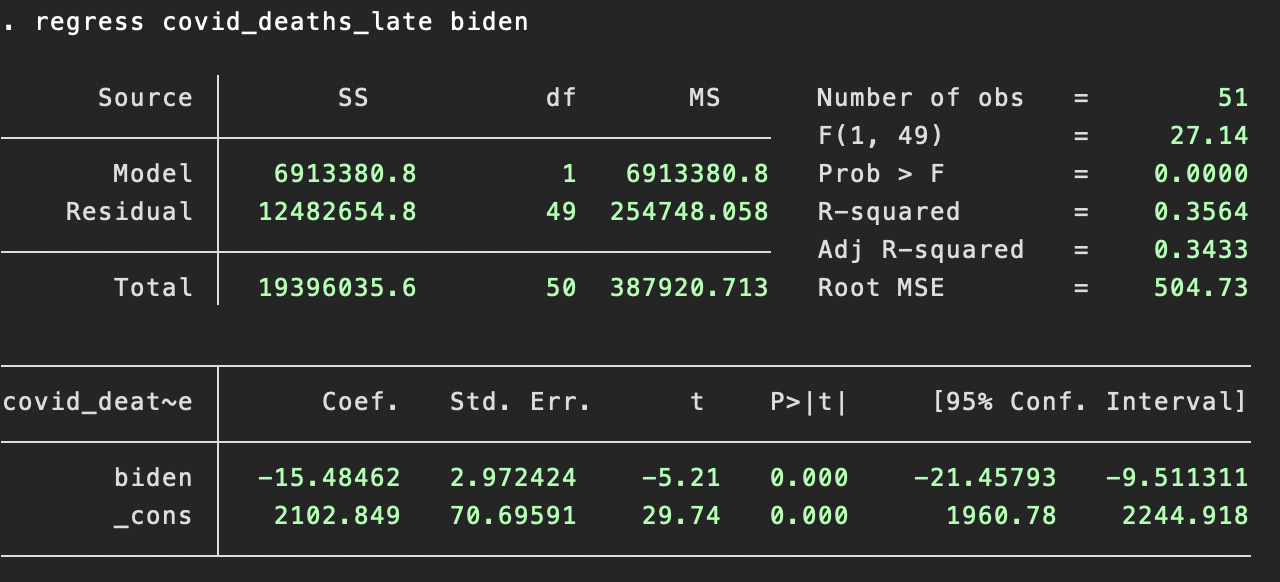
Highlights §
- One of my rules when I get in public debates as a statistician is: The simpler, the better. More or less, this is a version of Occam’s Razor. The more complications you introduce into an analysis, the more confounding variables that you attempt to control for, the more you expand researcher degrees of freedom — in other words, decision points by the analyst about how to run the numbers. (View Highlight)
- My keep-it-simple attitude is also a stress response from years of experience arguing on the Internet. Any time you can make your point using simple counting statistics or other very straightforward methods, I consider that a win. People usually aren’t really interested in the intricacies beyond a certain point. Most of the time, what Scott Alexander calls “isolated demands for rigor” — there’s always some factor you haven’t accounted for — are just stepping stones on the road to confirmation bias. (View Highlight)
- So my aim is generally to focus on stylized facts that are true and robust. And to keep repeating them. I like simple (or simple-seeming) claims that — and I can’t emphasize this last part enough — I expect will hold up to scrutiny. (View Highlight)
- It also helps to have kicked the tires on the claim a bit. Maybe you have run the more complicated version of the analysis. Or even better, maybe you’ve run it several different ways. And maybe you’ve consulted other research on the subject. If you’ve done this, and you’re getting a consistent answer, your claim is probably robust. When this is the case, I don’t think it’s necessarily worth your time — when writing for a popular audience — to prepare the equivalent of a 20,000-word journal article detailing all your methods, full of Greek characters and dozens of footnotes. (View Highlight)
- Until vaccines became available, there was little difference in COVID death rates between blue states and red states. (View Highlight)
- After vaccines became available, there were clear differences, with red states having higher death rates, almost certainly as a result of lower vaccine uptake among Republicans. (View Highlight)
- This wasn’t intended as any sort of super-duper hot take, and I pared the post down to avoid having too much of an attack surface. Nevertheless, it quickly became the most commented-upon post in the (short) history of this publication. The comments here were fairly civil, especially at first. (I really appreciate that, everyone.) Externally, though, these claims were more controversial. Here for instance, was Martin Kulldorff on Twitter/X: (View Highlight)
- Kulldorff’s argument is unsound. Age does explain some of the differences in COVID death rates between states. Certainly, COVID is much, much more deadly for older people, to an extent the media probably didn’t emphasize enough. But, this is almost entirely orthogonal to state partisanship — and even more so to vaccination rates. (View Highlight)
- As a quick aside, as someone who’s spent a lot of time looking at how behavioral and attitudinal data varies across American states, I think you should generally be suspicious when people attribute a lot of the differences to age. States don’t vary that much in age. (View Highlight)
- But OK, fine, let’s do this properly. Let’s run a regression analysis, which is a technique to decompose the effect of different variables. First, as a baseline, let’s run a simple, one-variable regression to back up my claim that state partisanship predicts COVID death rates. (View Highlight)
